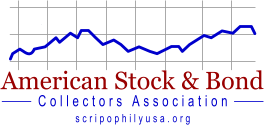Savings Bonds
History of the U.S. Savings Bond – Courtesy of SavingsBonds.pro
On February 1, 1935, President Franklin D. Roosevelt signed legislation that allowed the U.S. Department of the Treasury to sell a new type of security, thus the Savings Bond was born. One month later, the first Series A Savings Bond proceeded to be issued with a face value of $25. At first, the main purpose was help finance World War II, these were referred to as Defensive Bonds. On April 30, 1941 Roosevelt purchased the first bond from Treasury Secretary Henry Morgenthau. The next day, they were made available to the public. After the attack on Pearl Harbor, Defense Bonds were informally known as War Savings Bonds, citizens could buy the bonds for a dime. All the revenue coming in from the bonds, went directly to support the war. Even after the war ended, Savings Bonds became popular with families
Savings bonds are debt securities issued by the U.S. Department of the Treasury to help pay for the U.S. government’s borrowing needs. U.S. savings bonds are considered one of the safest investments because they are backed by the full faith and credit of the U.S. government. Savings Bonds come in eight values: $50, $75, $100, $200, $500, $1,000, $5,000 and $10,000. After purchase, the holder must wait at least six months before cashing it in, when they will receive the capital plus some interest. The maturity periods can vary.
Series E U.S. Savings Bonds were promoted and marketed by the United States of America government as war bonds from 1941 to 1980. When Americans refer to war bonds, they are usually referring to Series E bonds. During WWII, Government Bond rallies were held throughout the country with famous motion picture celebrities to help promote the bonds and the war effort. Free movie days were held in theaters nationwide with a bond purchase as the admission. Disney certificates were issued as premiums to purchasers of U.S. WWII savings bonds
The physical size of the bond was reduced in 1944 to save paper and money. Towards the end of the war, the bonds were renamed Victory Bonds.




